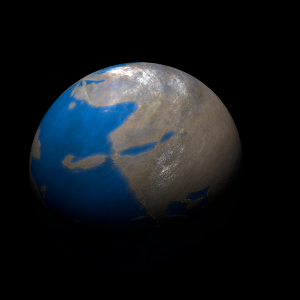|
|
Space Astro
|
Info for exoplanet "Gulo-zunyn"
| Scientific (actual) data |
|---|
| Name | Kepler-939 b |
| Planet status | Confirmed |
| Radius | 0.156 |
| Orbital period | 14.8783 |
| Discovered | 2016 |
| Updated | 2021-02-05 |
| Tconj | 2454980 |
| Publication | Announced on a website |
| Detection type | Primary Transit |
| Alternate names | 2MASS J19352774+4701365 b, K01722.01, KIC 10080248 b, KOI-1722 b, KOI-1722.01 |
| Star name | Kepler-939 |
| Right ascension | 293.87° |
| Declination | 47.03° |
| Mag j | 14.28 |
| Mag h | 13.861 |
| Mag k | 13.762 |
| Star distance | 1029 |
| Star metallicity | -0.12 |
| Star mass | 0.88 |
| Star radius | 0.85 |
| Star age | 4.47 |
| Star temperature | 5471 |
| Star alternate names | 2MASS J19352774+4701365, KIC 10080248, KOI-1722 |
| Wikipedia article | Kepler-939 b |
Back
| |
| Fictional info (?) |
|---|
| Suggested name | Gulo-zunyn |
| Planet type | Cold planet |
| A prominent result is the "great orange spot", a giant storm that is known to have existed for centuries since it was first observed by radar. |
| Atmosphere | Formaldehyde | 83% |
| Hydrogen deuteride (HD) | 13% |
| Nitric oxide | 3.3% |
| Atmospheric pressure | 0.7 bar |
 |
| No known satellites |
| Google search for Gulo-zunyn |
|
Website by Joachim Michaelis
|
|
|
|